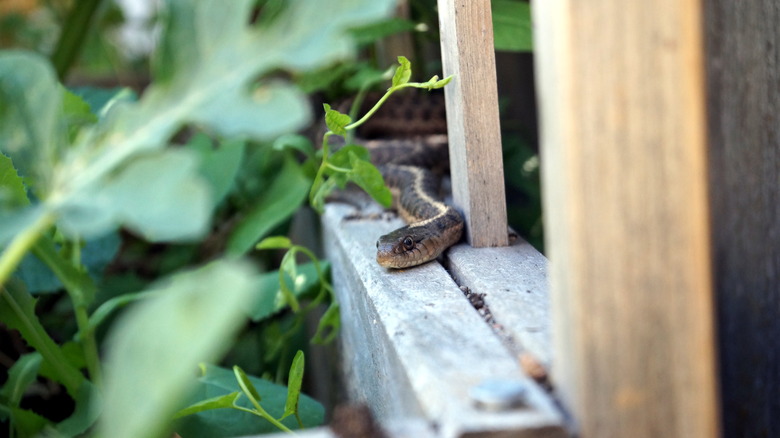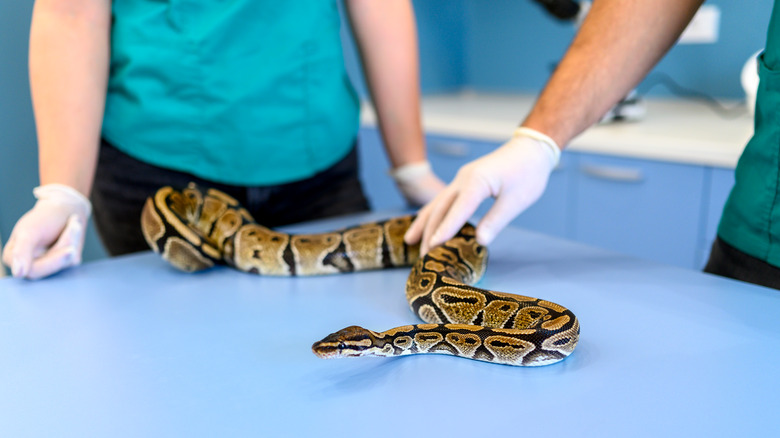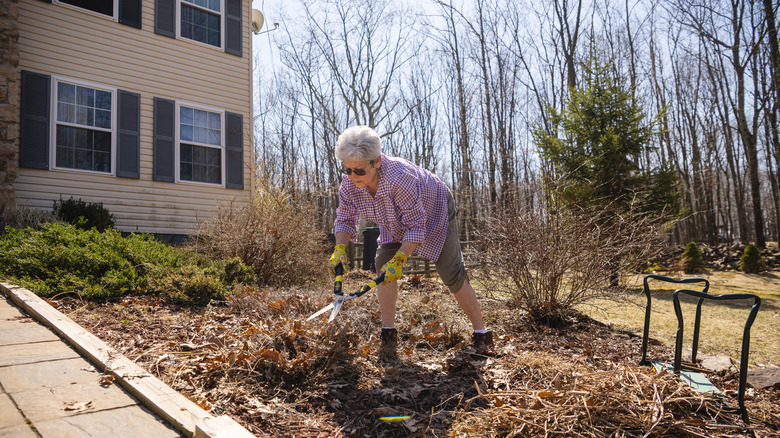What To Do If You Encounter A Snake In The Garden
Discovering a snake in your garden can be an unnerving experience, prompting a mix of fear and curiosity — but usually more of the former. To comprehend why these slithering creatures venture into human domains, it's essential to recognize their basic needs. Gardens are abundant with food sources like rodents and insects, as well as cozy hiding spots provided by dense vegetation and debris, so they absolutely make an appealing habitat for snakes. Warm and inviting, gardens become a hotspot for these reptiles seeking shelter and sustenance. But what do you do if you find yourself face-to-face with a snake in your garden? In this situation, keeping yourself calm and composed is key no matter how frightened you may feel.
Snakes, by nature, avoid confrontations with humans. When forced to meet one by accident, they typically seek an escape route, preferring to disappear into the shadows. Responding with calmness is paramount, as violent confrontations can lead to snakebites, resulting in injury or, for venomous species, even fatalities. Here, we delve into the intricate world of snake behavior and offer practical guidance on ensuring a positive outcome in case of an encounter in your garden.
Understanding snake behavior and ensuring safety
According to NC State University, contrary to common misconceptions, snakes are not inherently aggressive towards humans. Their primary instinct is self-preservation, prioritizing avoidance over confrontation. During encounters with non-venomous snakes, staying composed and maintaining a safe distance are key.
Most snakes want to avoid humans and will likely slither away if given the chance. If you can, back away slowly to provide the snake with an escape route. Resist the temptation to handle them, as this can provoke defensive behavior. Even non-venomous species may bite if they feel threatened. If you can do so safely, observe the snake from a distance. Take note of its color, markings, and behavior. This information can be helpful for professionals if identification becomes necessary. In case you have pets or kids, ensure they are kept at a safe distance as they may not recognize the potential danger and could provoke the snake.
If you're uncertain about the snake species or if it's venomous, contact a professional wildlife expert or herpetologist. They have the expertise to identify and handle the snake safely. In the rare event of a venomous snakebite, seek immediate medical attention. Don't attempt to suck out the venom or apply a tourniquet. Per the Centers for Disease Control and Prevention (CDC), these old-fashioned methods can do more harm than good.
Creating a snake-proof garden environment
Mitigating snake encounters in your garden involves making the space less appealing to these reptiles, advises The Humane Society of the United States. Regularly trim grass and vegetation to eliminate potential hiding spots. Remove debris, such as woodpiles or rocks, where snakes might seek refuge. Seal gaps or holes in fences and structures to prevent snake entry. Consider incorporating natural snake deterrents, such as certain plants like sage, known for repelling snakes, or specialized fencing, to discourage their presence.
Crucially, educating oneself about local snake species is instrumental in creating a garden environment conducive to peaceful coexistence. By implementing these practical tips, you not only minimize the chances of unwelcome snake encounters but also contribute to the safety of your family and the well-being of the reptiles that share your outdoor space. A thoughtful approach to landscaping and understanding the needs of both humans and snakes is key to establishing a balanced and harmonious environment in your garden.


